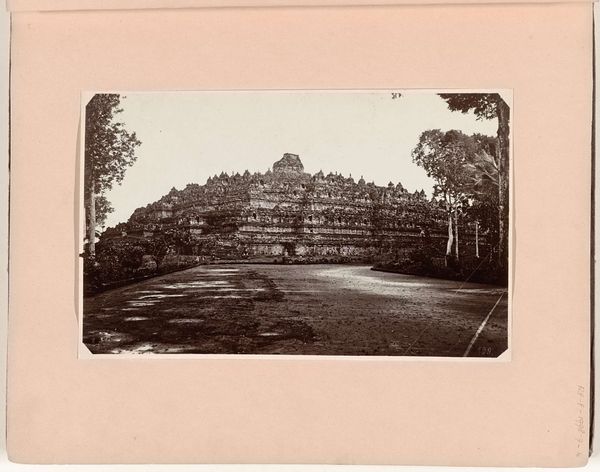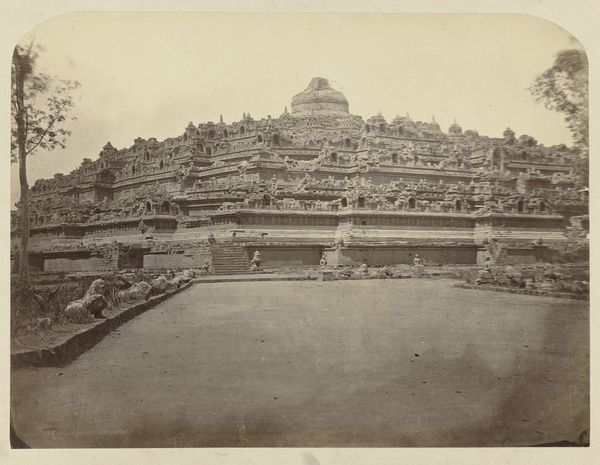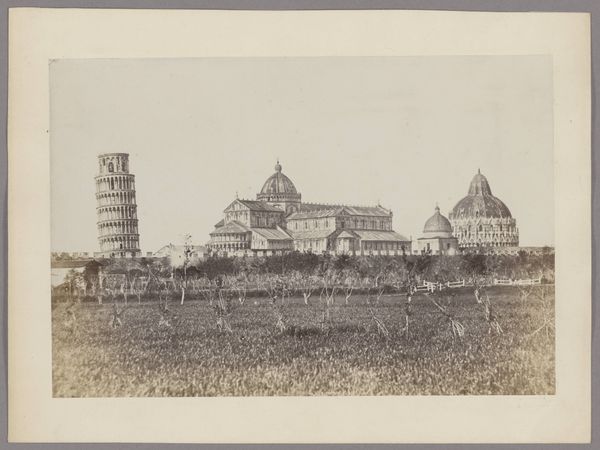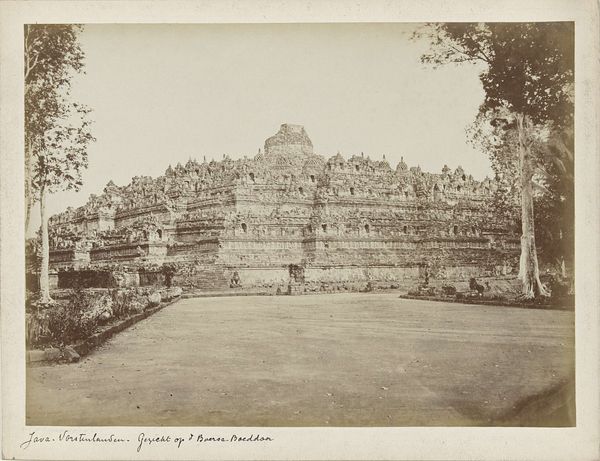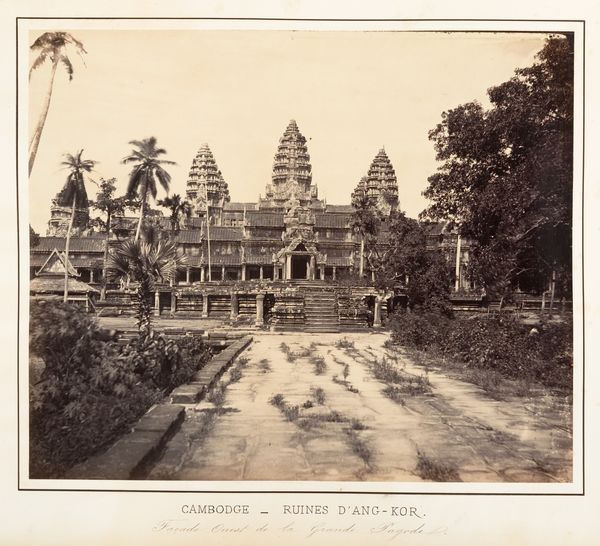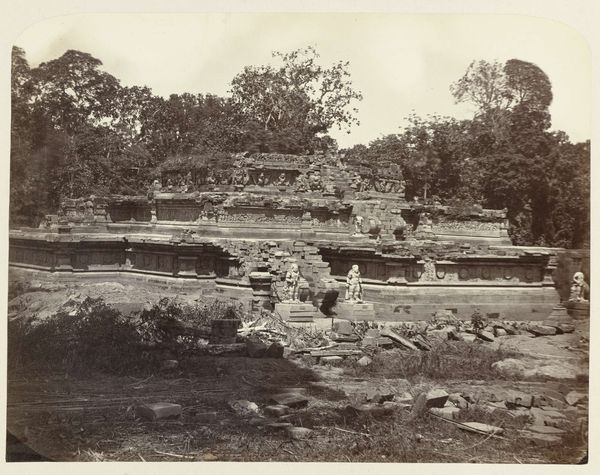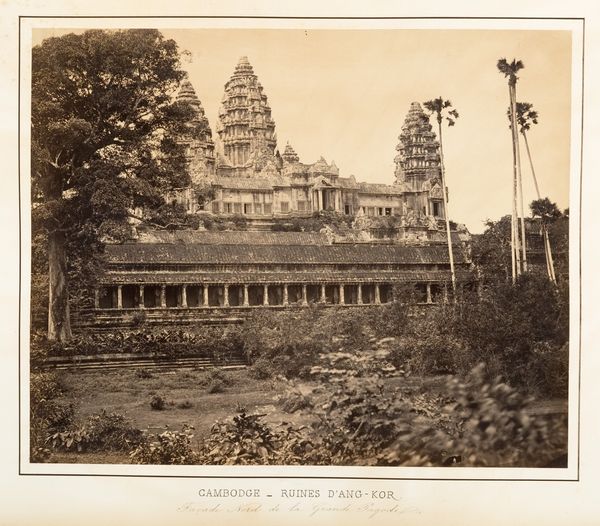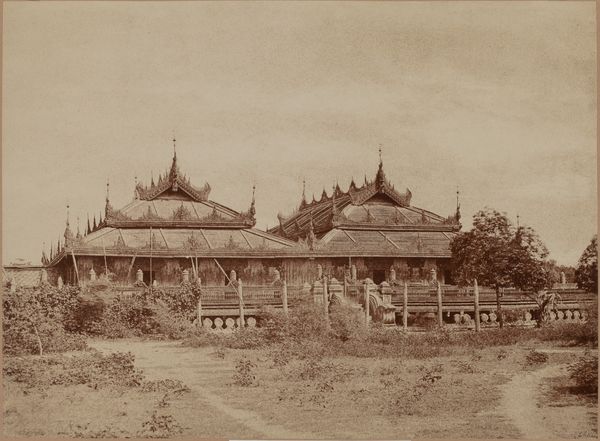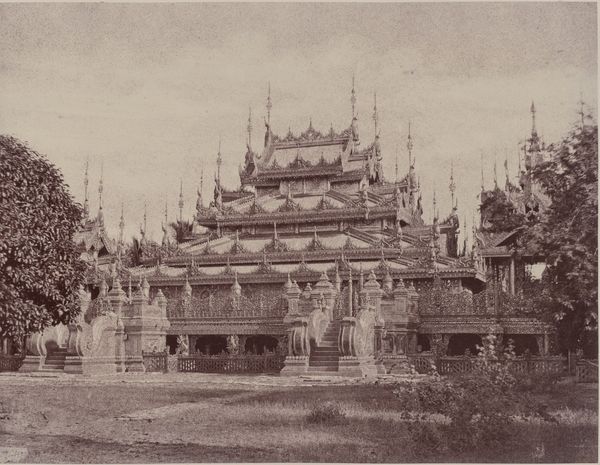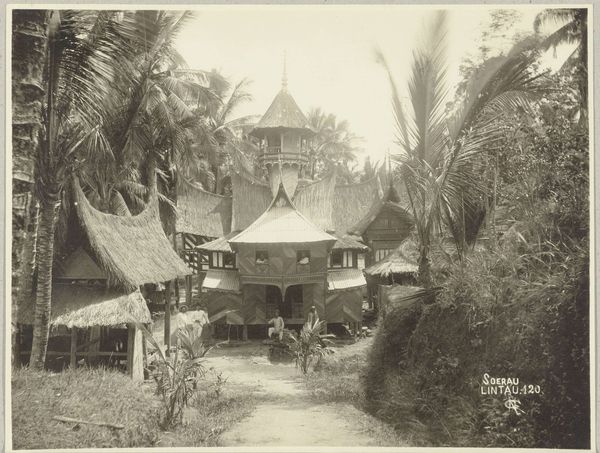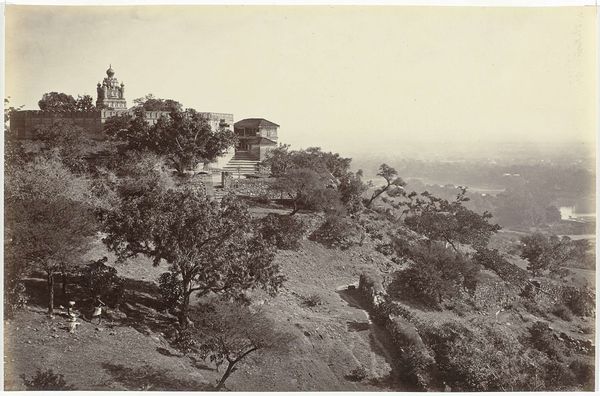
photography
#
asian-art
#
landscape
#
nature
#
photography
#
outdoor scenery
Dimensions: height 175 mm, width 234 mm
Copyright: Rijks Museum: Open Domain
Onnes Kurkdjian created this photograph of Borobudur in Java. As a photographic print, the image results from a complex interplay of chemistry and optics, reflecting the rise of industrial image-making in the late 19th century. The sepia tones and soft focus evoke a sense of timelessness. But don't be fooled by the peaceful, idyllic scene. Photography in this era was instrumental to colonialism, portraying distant lands, architecture and people as spectacles for Western consumption. Consider how the labor-intensive construction of Borobudur, a monumental Buddhist temple, contrasts with the mechanical reproduction of its image. The photograph flattens the immense architectural feat into a commodity. It's also worth noting that Borobudur was largely forgotten and overgrown until its ‘rediscovery’ and subsequent restoration by colonial powers. The photograph invites us to reflect on the power dynamics embedded in the act of representation and its ties to labor, politics, and consumption.
Comments
No comments
Be the first to comment and join the conversation on the ultimate creative platform.

